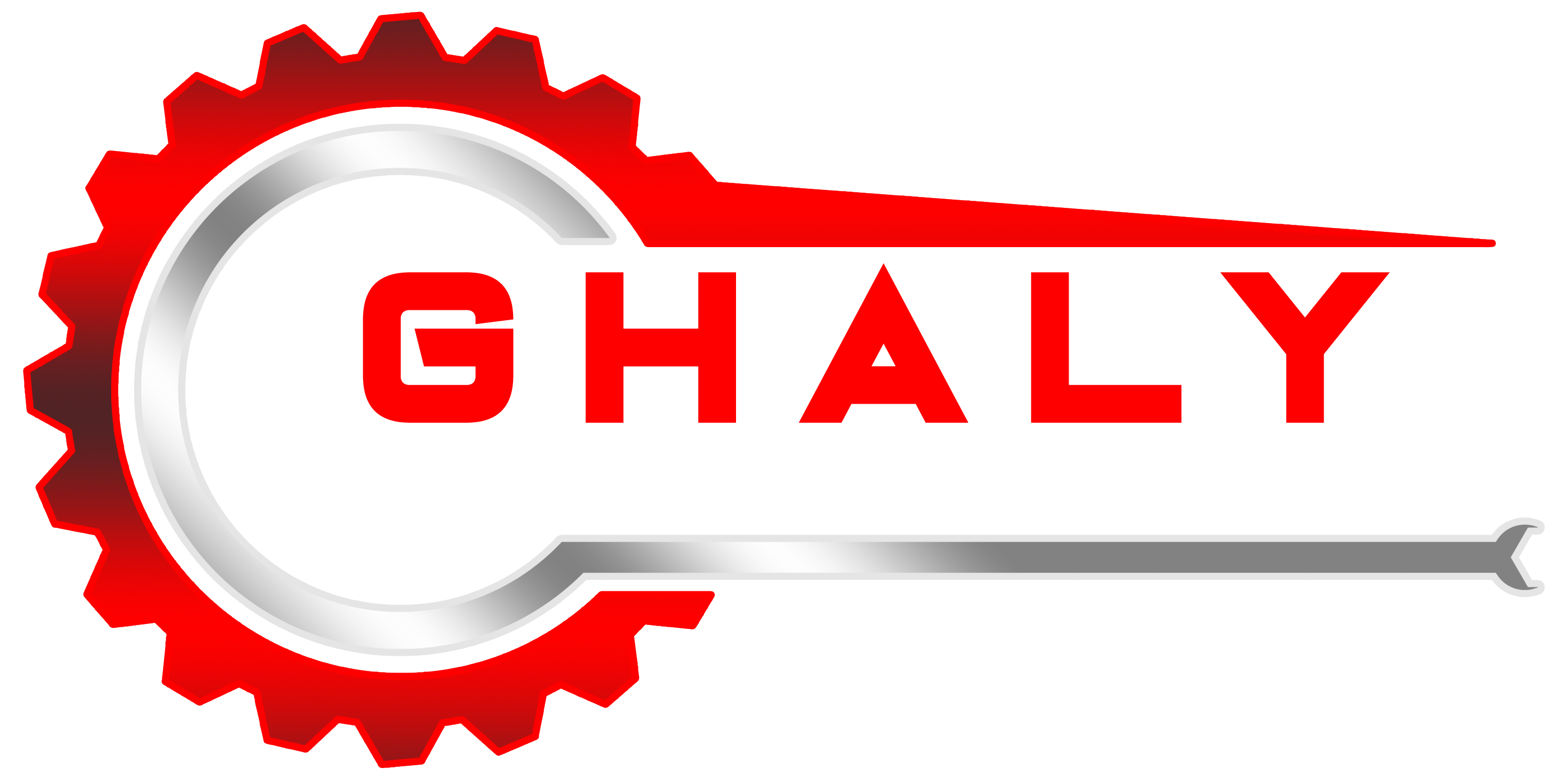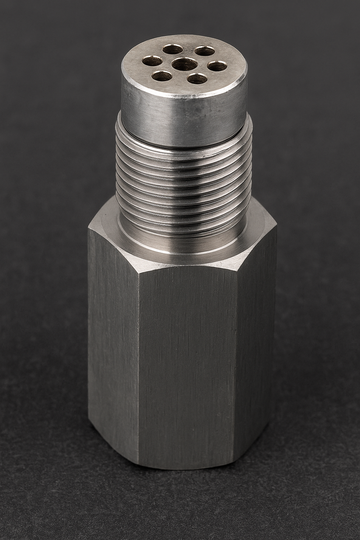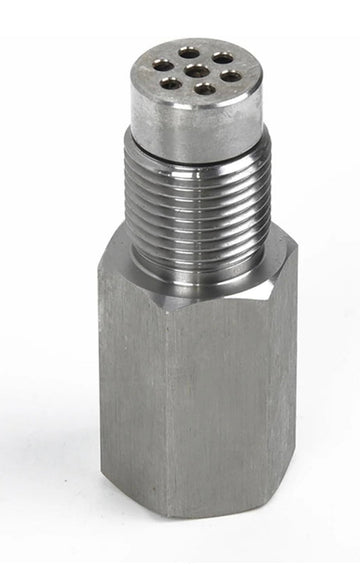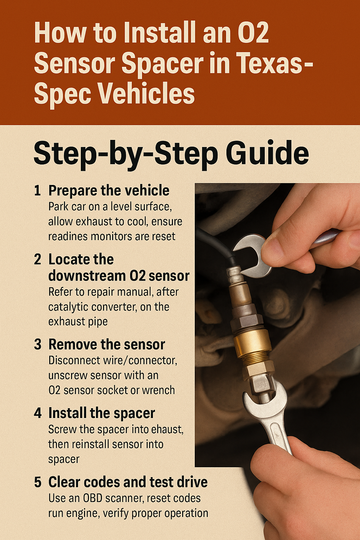Summary
This guide helps Iowa drivers understand the role of the O2 oxygen sensor adapter—why it’s critical for engine performance, fuel economy, and long-term emissions compliance, even in a state without mandatory emissions testing.
Table of Contents
1. What Is an O2 Oxygen Sensor Adapter?
An O2 oxygen sensor adapter helps your vehicle's onboard diagnostic system (OBD-II) monitor the oxygen content in the exhaust gases. This component helps your engine control fuel delivery and ensures the catalytic converter is doing its job. While many refer to it simply as an "O2 sensor," using the term "O2 oxygen sensor adapter" helps highlight its role as both a sensor and a retrofit adapter often used in performance and emissions-related upgrades.
2. Why the O2 Oxygen Sensor Adapter Matters in Iowa
Even though Iowa doesn’t require regular emissions testing, maintaining a functional O2 oxygen sensor adapter is important for:
-
Fuel Efficiency: A faulty sensor can reduce mileage by up to 20%.
-
Engine Performance: Inaccurate oxygen readings lead to poor combustion and rough idle.
-
Preventing Check Engine Lights (CELs): The adapter helps avoid common codes like P0420 (catalyst efficiency).
-
Future Readiness: If you move out of state or sell your car, emissions readiness will be critical.
3. Legal and Practical Considerations for Iowa Drivers
-
No Required Emissions Testing: Iowa drivers are not subject to mandatory emissions inspections, but the EPA still prohibits tampering with emissions systems.
-
Federal Compliance: Modifications that involve removing the catalytic converter or bypassing the O2 oxygen sensor adapter can result in federal fines.
-
Smart Tuning: Using an O2 oxygen sensor adapter correctly can help performance tuners avoid CELs while staying within compliance boundaries.
4. How to Tell If Your O2 Oxygen Sensor Adapter Is Failing
Signs of a bad or failing O2 oxygen sensor adapter include:
-
Illuminated Check Engine Light (especially codes like P0130–P0175, or P0420)
-
Poor fuel economy
-
Rough idling or stalling
-
Failed OBD-II readiness monitors
-
Sulfur smell from exhaust
5. Local Options for Diagnosis and Replacement in Iowa
Several Iowa-based shops and auto parts stores can help with diagnostics and replacement:
-
Big A Auto (Dubuque) – Trusted for full sensor diagnostics
-
O’Reilly Auto Parts (Statewide) – Offers free OBD-II scans
-
Westside Tire Co. (Cedar Rapids) – Specializes in emissions diagnostics
-
Seydel Auto & Truck (Iowa City) – Provides complete inspection services
6. Best Practices for Installation and Maintenance
-
Use anti-seize compound during installation to prevent rusted threads
-
Choose stainless steel adapters to resist Iowa’s winter salt exposure
-
After replacement, clear codes and ensure readiness monitors are complete
-
Use a properly angled or mini catalytic O2 oxygen sensor adapter to reduce false catalyst codes
7. Frequently Asked Questions (FAQ)
Q: Do I need to worry about emissions if I live in Iowa?
A: Even without emissions testing, your vehicle still relies on the O2 oxygen sensor adapter for optimal fuel use and engine health.
Q: Will an O2 oxygen sensor adapter help me pass emissions if I leave Iowa?
A: Yes. A properly functioning adapter ensures your OBD-II system is ready and helps avoid catalyst-related error codes.
Q: Can I install an O2 oxygen sensor adapter myself?
A: Yes, with basic tools. Just make sure to use anti-seize and follow proper torque specs.
Q: What happens if I ignore a bad O2 oxygen sensor adapter?
A: You risk lower fuel economy, engine wear, and eventually failing inspections in states where they're required.
Final Thoughts
For Iowa drivers, staying on top of your O2 oxygen sensor adapter's health is a smart move for performance, fuel savings, and potential future emissions compliance. Even in a state without inspections, your engine still cares—and so should you.


![ Fix P0420 Fast: Do O2 Sensor Spacers Really Work? [Legal Tips Inside]](http://ghalysmotorparts.com/cdn/shop/articles/ChatGPT_Image_Oct_10_2025_10_40_32_AM.png?v=1760118069&width=360)
![Do O2 Sensor Spacers Really Help Clear the P0420 Code? [Expert Guide]](http://ghalysmotorparts.com/cdn/shop/articles/ChatGPT_Image_Oct_9_2025_09_28_33_PM_654c1798-c0d4-428f-a5b6-f20b95661b54.png?v=1760129952&width=360)


